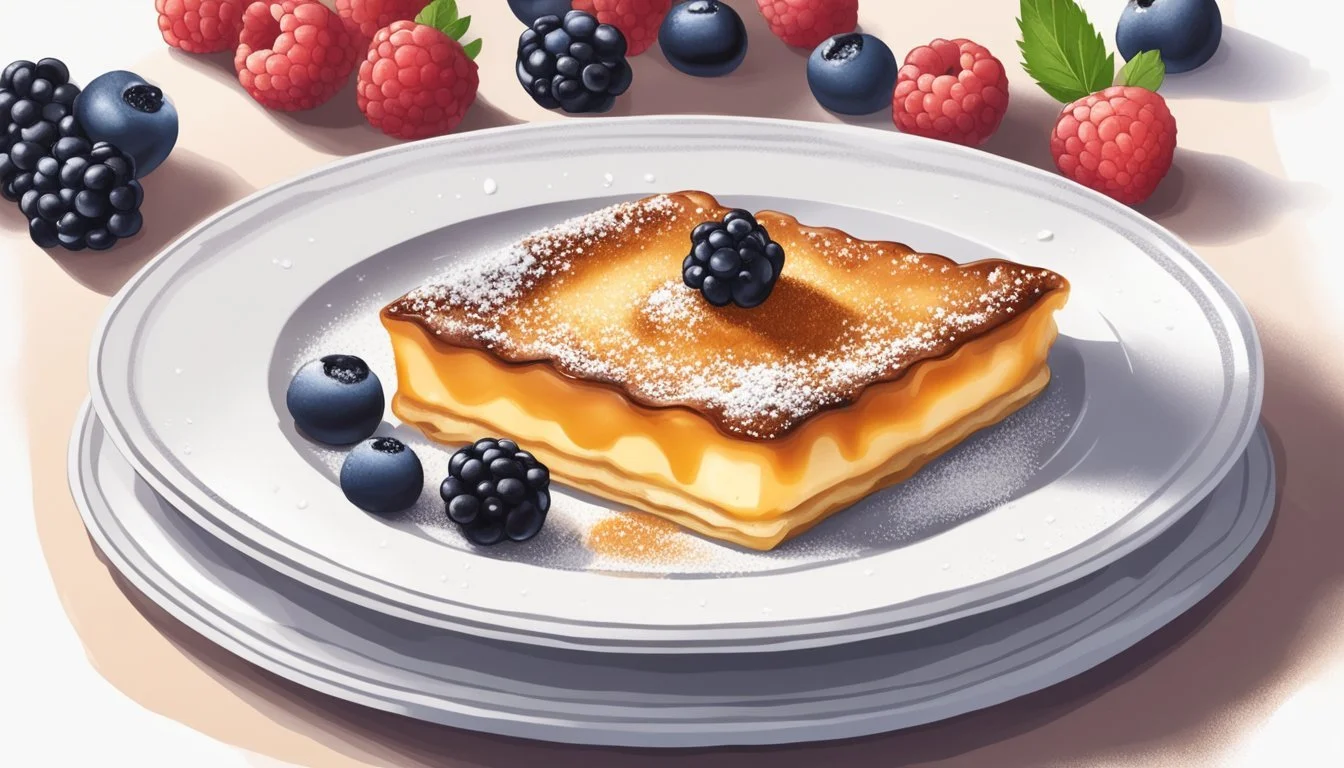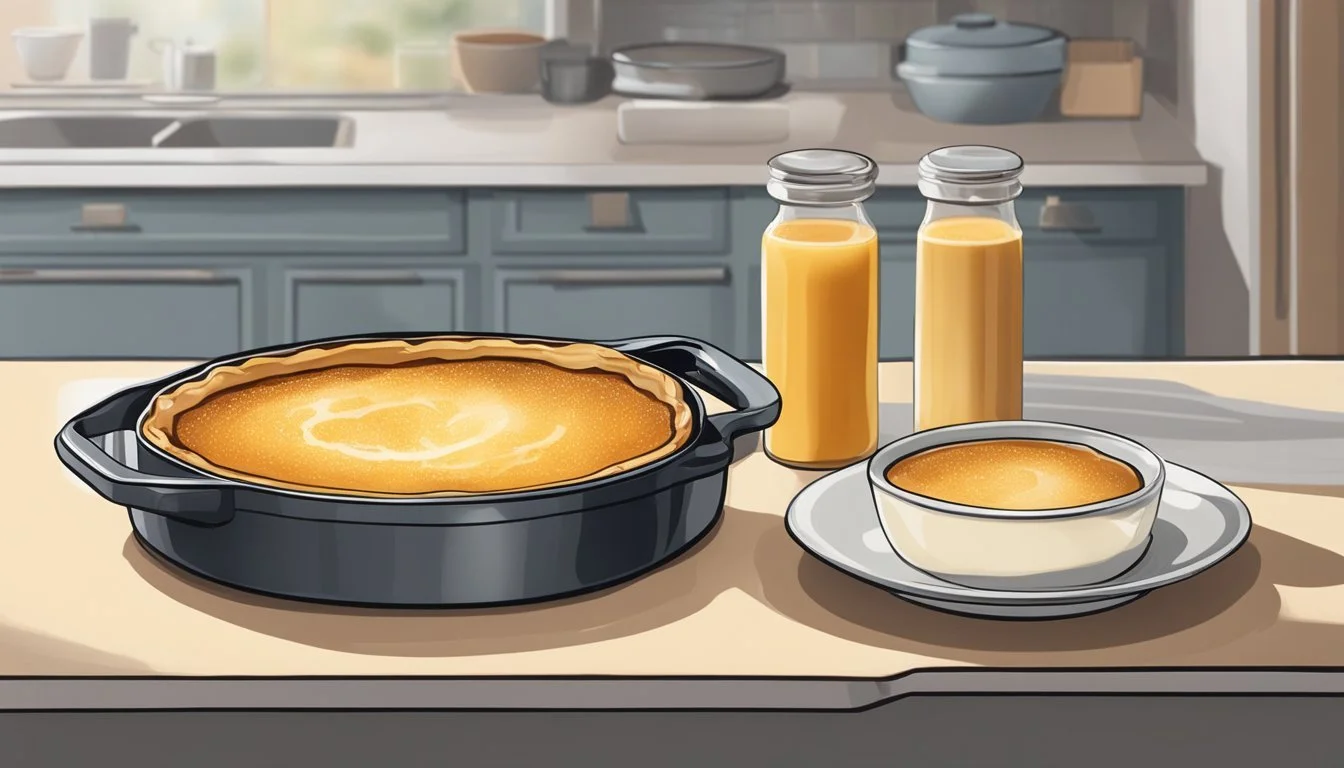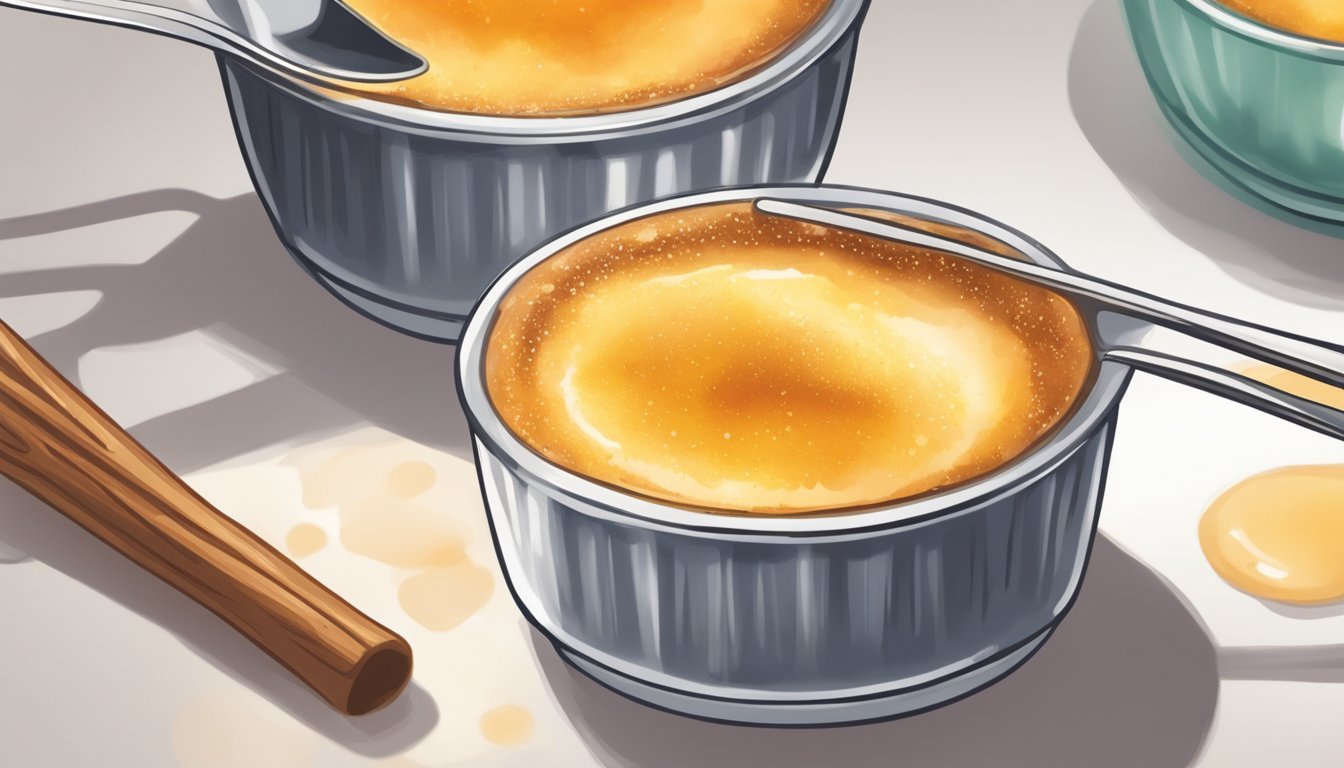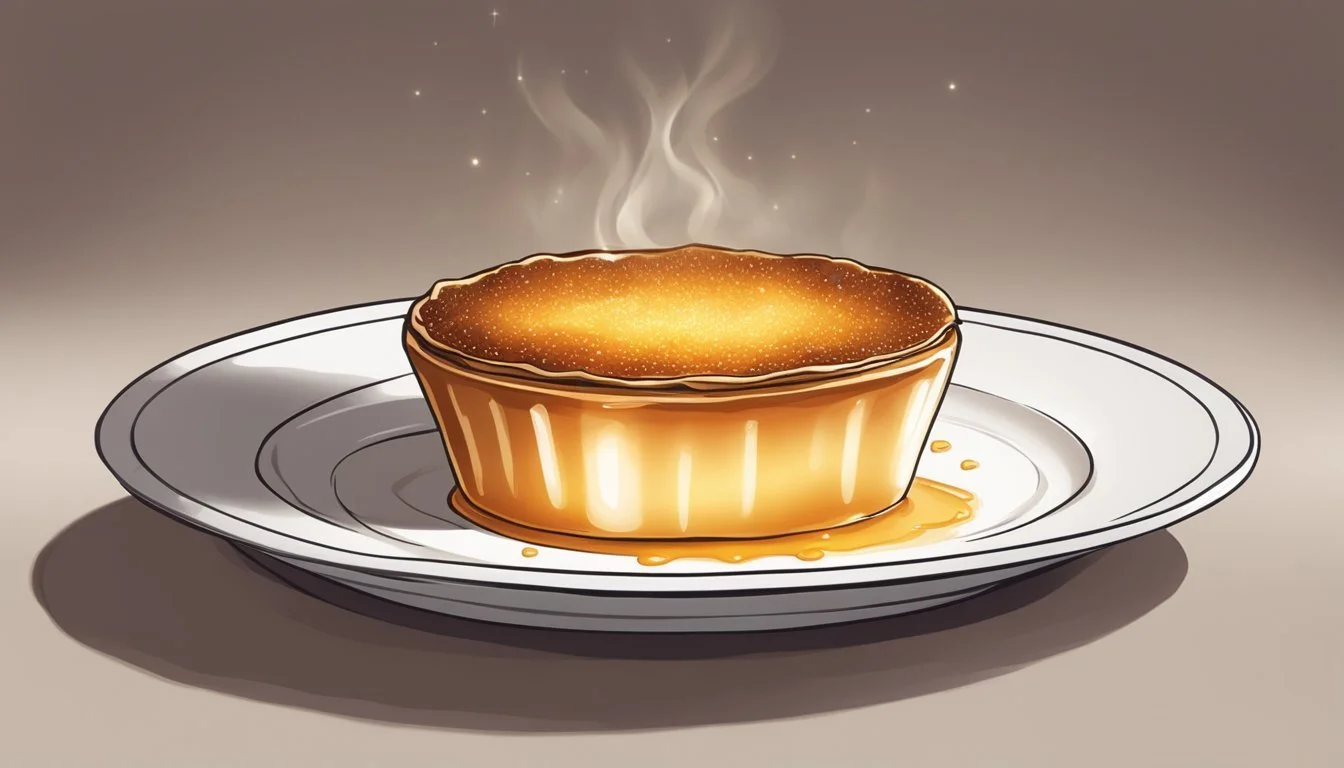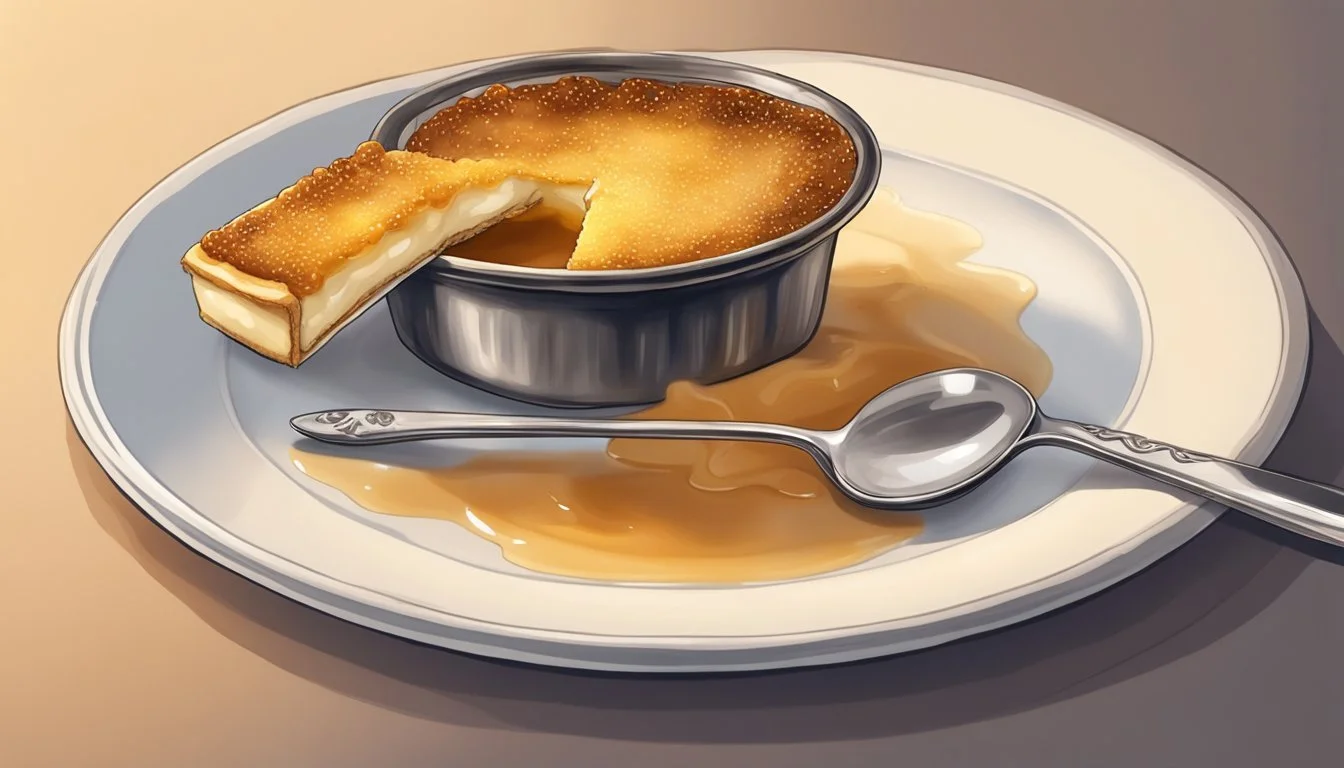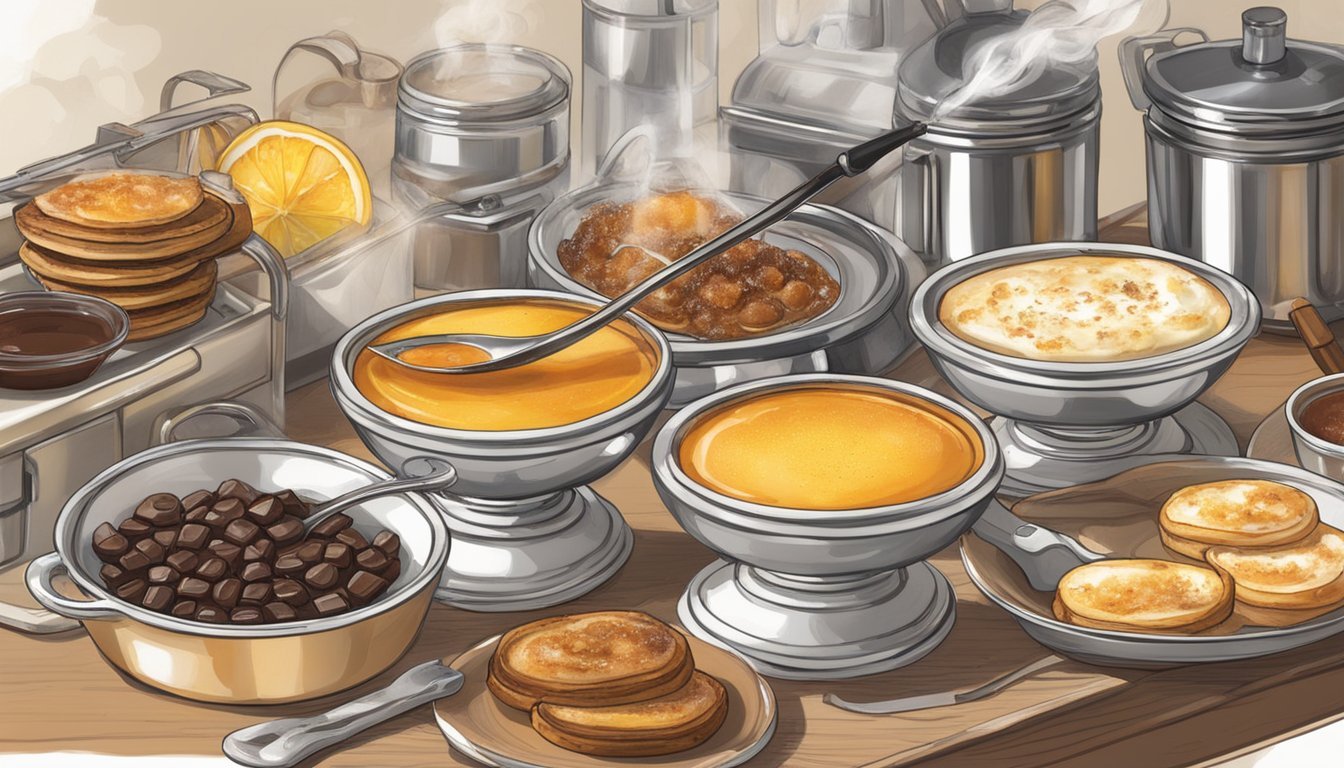How Long Does Freshly Prepared Crème Brûlée Last?
Shelf Life and Storage Tips
Crème brûlée, the classic French dessert known for its rich custard base and contrasting layer of hard caramel, is revered for its delicate balance of textures and flavors. The shelf life of a freshly prepared crème brûlée has practical implications for both home cooks and professional chefs, as the quality and safety of the dessert are paramount. Freshly made, crème brûlée can last in the refrigerator for 3 to 5 days, during which the custard typically retains its best quality.
Maintaining the right storage conditions is crucial for extending the freshness of crème brûlée. The dessert should be stored at a temperature ranging from 35 to 40 degrees Fahrenheit (1 to 4 degrees Celsius) to ensure the custard remains at a safe temperature. For long-term storage, crème brûlée can be kept in the freezer where it will remain in good condition for approximately 4 to 6 months, though it's preferable to store it without the caramelized sugar topping, as the texture and taste are best when fresh.
The Basics of Crème Brûlée
Crème brûlée, a sumptuous dessert with a rich custard base capped by a layer of hard caramel, is both classic and exquisite. Its delicate balance of simplicity and complexity offers a smooth texture and satisfying crunch.
Composition and Ingredients
Crème brûlée has a simple yet precise composition that hinges on high-quality ingredients. The custard, primarily made of heavy cream, egg yolks, and sugar, achieves a smooth and creamy texture. Essential to its flavor profile is vanilla, often infused into the cream to form a rich base note.
Ingredients:
Heavy cream
Egg yolks
Granulated sugar
Making the Custard
The process begins with heating the cream and adding vanilla for flavor. Egg yolks and sugar are then whisked together until the mixture becomes pale. A critical stage involves tempering the yolks by slowly adding the warm cream, which ensures a homogeneous mixture and prevents curdling. Once combined, this mixture is poured into ramekins and cooked at a low temperature until just set but still trembling in the center.
Custard Texture: Smooth and creamy
Cooking Temperature: Low, typically around 300° F (149° C)
Cooking Method: Baked in a water bath
Caramelizing the Sugar Top
Completing the dessert involves sprinkling a thin, even layer of sugar atop the custard and using a torch to caramelize it. The sugar melts, bubbles, and then hardens into a glossy caramelized surface that contrasts the custard's rich creaminess. Mastery of this technique results in a signature crack readily achieved with a gentle tap of the spoon.
Tools for Caramelization: Kitchen torch
Caramel Texture: Hard and glass-like
How to Properly Bake Crème Brûlée
Crisp caramelized sugar atop a creamy custard defines a well-baked crème brûlée. The process requires precise temperature control and the proper technique to achieve the dessert’s signature texture and flavor.
Preparing Ramekins
Before beginning the baking process, one must prepare the ramekins. They should use 6-ounce ramekins, as these are the standard size for individual servings. It is important to arrange the ramekins in a baking dish or roasting pan conducive to creating a water bath, which will ensure even cooking and creamy texture of the custard.
The Baking Process
The crème brûlée's baking process involves gently cooking the custard at a low temperature. Preheat the oven to 300°F (150°C), ensuring it reaches the temperature before the ramekins enter. The custard mixture, prepared with heavy cream, vanilla extract, and egg yolks should be poured into the ramekins. They then carefully pour boiling water into the baking dish until it reaches halfway up the sides of the ramekins, being cautious to avoid splashing water into the custard.
Perfecting Texture and Flavor
Baking time is key to achieving the perfect texture. One should bake the custards until they are set around the edges but still slightly wobbly in the center, usually about 30 to 40 minutes. A slow and low bake allows the custard to reach a creamy consistency without overcooking. Once baked, they must cool the custards at room temperature and then chill in the refrigerator for at least two hours up to several days, which will also solidify the flavors.
Storing Crème Brûlée
When storing crème brûlée, it is crucial to maintain its quality and freshness. By utilizing proper refrigeration methods, choosing the right containers for storage, and understanding the effects of freezing, one can preserve this dessert effectively.
Refrigerating the Dessert
Crème brûlée should be stored in the fridge shortly after it cools to room temperature. The ideal temperature range for refrigeration is between 35 to 40 degrees Fahrenheit (1 to 4 degrees Celsius), which helps to keep the custard chilled and prevents bacterial growth. To maintain food safety and texture, one should refrigerate the dessert in an air-tight container or cover it with plastic wrap to minimize exposure to moisture and other flavors in the fridge. The shelf life of refrigerated crème brûlée is typically 3-4 days.
Freezing and Long-Term Storage
For longer storage, crème brûlée can be frozen. However, one should keep in mind that freezing may alter the texture. Before freezing, one must ensure the dessert is completely cool and stored in an airtight container to prevent freezer burn and moisture loss. To optimize freshness, the dessert should be consumed within one month of freezing. For best results, it is recommended to add the sugar topping after thawing rather than before freezing.
Right Containers for Storage
The container chosen for storing crème brûlée can affect its shelf life and taste. An ideal container is:
Air-Tight: This restricts the flow of air and prevents the absorption of odors.
Moisture-Resistant: Containers that prevent humidity build-up are best to avoid making the dessert soggy.
Choosing containers made of glass or rigid plastic that can be sealed tightly with a lid or plastic wrap is often recommended. If aluminum foil must be used, it should be placed over a layer of plastic to prevent the topping from sticking.
Consuming Crème Brûlée
When planning to consume crème brûlée, it is essential to recognize its nature as a make-ahead French dessert known for its rich flavors and delicate texture. Recognized as 'burnt cream' due to its caramelized sugar topping, careful storage is key to maintaining its quality.
Serving Suggestions
Crème brûlée is traditionally flavored with vanilla bean paste, offering a deep and authentic vanilla taste that is both fancy and comforting. When ready to serve, one should remove the dessert from the refrigerator and allow it to come to a near room temperature. This step is crucial as it enhances the flavor and ensures that the custard is not too firm. The caramelized sugar topping should be added just before serving to ensure it retains the iconic crispness that contrasts the creamy custard below. A culinary torch can be used to achieve the desired level of caramelization, resulting in a glossy and brittle sugar crust.
Pairings and Variations
Flavors: While vanilla is the classic, crème brûlée can be customized with an assortment of flavors such as chocolate, coffee, or citrus to suit any palate.
Additions: A dollop of whipped cream or fresh berries can be added for an additional layer of texture and taste.
Pairings: To complement its rich taste, crème brûlée can be paired with a dessert wine or a cup of strong coffee for balance.
Variations: Seasonal variations using ingredients such as pumpkin or peppermint make for delightful twists on the traditional dessert.
Serving crème brûlée in its optimal state requires attention to detail both in preparation and storage. They must consume crème brûlée within 3 to 5 days of preparation and store it in the refrigerator at approximately 35 to 40 degrees Fahrenheit (1 to 4 degrees Celsius) to maintain its best quality.
Troubleshooting Common Problems
When making crème brûlée, achieving a smooth custard and the perfect texture throughout is critical. This section will guide readers through resolving two common issues: lumps and air bubbles, and moisture problems, which can detract from the dessert's signature delicacy.
Avoiding Lumps and Air Bubbles
Lumps in crème brûlée often result from improperly mixed custard or eggs that are not at the right temperature. One should ensure that the egg mixture is smooth and silky before combining it with the cream. Patience is key; mix slowly and consistently to prevent over-aeration. If lumps do occur, it is advisable to strain the custard through a fine sieve before pouring it into ramekins.
To reduce air bubbles, which can mar the texture and appearance of the dessert, let the mixture rest after combining the ingredients. This allows the air bubbles to rise to the surface naturally. Additionally, a culinary torch passed lightly over the surface before baking can aid in popping these bubbles.
Preventing Moisture Issues
Moisture can accumulate on the surface of crème brûlée, affecting the ability to achieve a crisp, burnt sugar topping. To mitigate this risk, one should ensure that the baking ramekins are covered with foil while in the water bath to prevent steam from entering. It’s also helpful to avoid overbaking; a gentle jiggle of the ramekin should reveal a slightly wobbly center, indicating it is ready. To maintain freshness and texture, refrigerated crème brûlée should be consumed within three to five days.
Understanding Food Safety
When it comes to food safety, the storage of crème brûlée is critical. It is a custard-based dessert that requires careful handling to prevent spoilage and ensure it remains safe to consume.
Risks of Improper Storage
Crème brûlée must be stored properly to reduce the risk of foodborne illnesses. Pathogens thrive at temperatures between 40°F and 140°F (4°C and 60°C), a range known as the "danger zone". Refrigeration is essential to keep crème brûlée out of this zone, as custard-based desserts (What wine goes well with desserts?) are particularly susceptible to bacterial growth. Improper storage can result in the spoilage of leftovers and freshly prepared desserts alike, making them unsafe to eat.
Freshness Indicators
One can determine the freshness of crème brûlée through several indicators:
Appearance: Custard should be smooth and free of discoloration.
Odor: Fresh crème brûlée should lack strong, off-putting odors, which are a sign of spoilage.
Texture: The custard should be firm yet creamy. Any separation or watery consistency indicates spoilage.
If any of these signs are present, it's best not to consume the dessert. Regularly checking these freshness indicators and using proper refrigeration techniques can help ensure the safety and enjoyment of this classic dessert.
Crème Brûlée History and Varieties
Crème brûlée has a storied past, tracing its origins back to France with variations appearing across the globe. Known for its vanilla-infused custard and caramelized sugar topping, this dessert has been adapted into numerous local interpretations.
Origin of Crème Brûlée
France is often credited as the birthplace of crème brûlée, with the first documented recipe appearing in 1691 by chef Francois Massialot. Massialot served French royalty, including King Louis XIV and Anne of Austria. Despite its royal associations, the dessert's history is debated, with some claims of its presence in England's Trinity College in Cambridge as early as 1630 under a different guise.
Global Variations
Crème brûlée has crossed borders and oceans, leading to regional adaptations:
France: Remains true to the classic recipe, normally featuring a rich vanilla custard topped with a brittle layer of caramelized sugar.
Spain: Presents a similar dessert known as crema catalana. Traditionally served on Saint Joseph's Day, it has a zestier flavor, often infused with cinnamon and lemon, and it's served at a cooler temperature than its French counterpart.
England: Renowned for its version in Trinity College, where the dessert includes a similar custard under a crackled caramel layer, often garnished with the college crest.
This dessert's recipe may take on local characteristics, but at its heart, a proper crème brûlée will always include a creamy custard base, typically flavored with vanilla, and a contrasting caramelized sugar top.

